Icelandics at our place: the little mavericks!
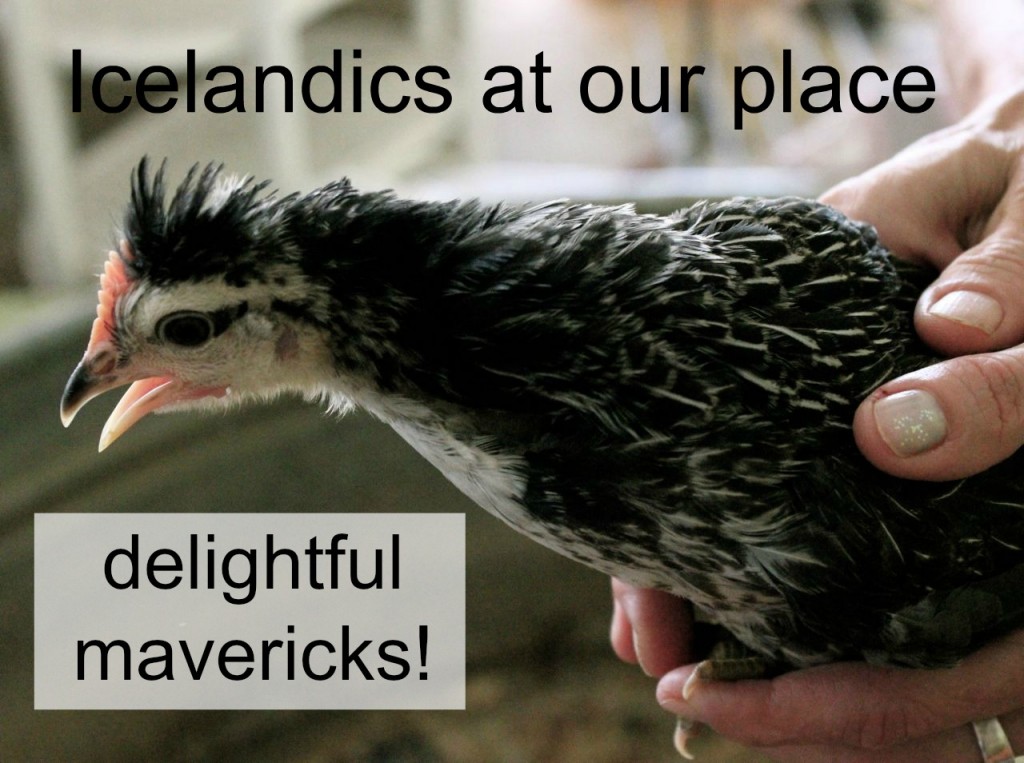
I do think it’s past time for an Icelandic chicken update, don’t you, my patient Gentle Reader? I have the best readers in the world, by the way. Probably a good share of you follow my blog for the chicken information (vomitingchicken, hello) and they are so much a normal part of my life (the chickens) that I don’t write about them often enough. Keeping chickens is like breathing to me, and I don’t very often mention my breathing practices, knowwhatImean? Meanwhile I write about garden goodies and preserving, growing things, remodeling, photography, even blogging issues while you may be wondering: what about the chickens, anyway, what’s up with that?
So enough with the bait-and-switch! Here’s the update on my newest chickens–my Icelandics–that I’ve been teasing you with.
These chickens. I love them so much. They certainly are mavericks, and as I’ve been accused of being a bit of a maverick myself (cough), I enjoy and identify with them entirely. If I were a chicken, I think I’d be an Icelandic, ya’all.
Icelandics are stubborn, thoughtful, lovely, active, passionate-about-being-outdoors, slightly-built little things and I never get bored with watching them or spending time with them. Let’s re-wind a bit, though. A month or so ago, they looked like this (below), and we moved them from the garage brooder out to the chicken tractor, where (they shared with me) there’s more scope for the imagination, but not quite enough to suit them.
They prefer as much freedom as possible.
From the chicken tractor, I let them do some free-ranging outside, with the tractor as their nighttime roosting place. And now over the past couple of weeks, I’ve been training them to go into the nursery (the smaller room in the chicken coop) but I’ll share more about that process later. (Let’s say that some nights are more successful than others.) These cuties have their own ideas about the way they want to live their lives, that’s for sure, including where they will sleep at night. 🙂 Can’t say that I blame them.
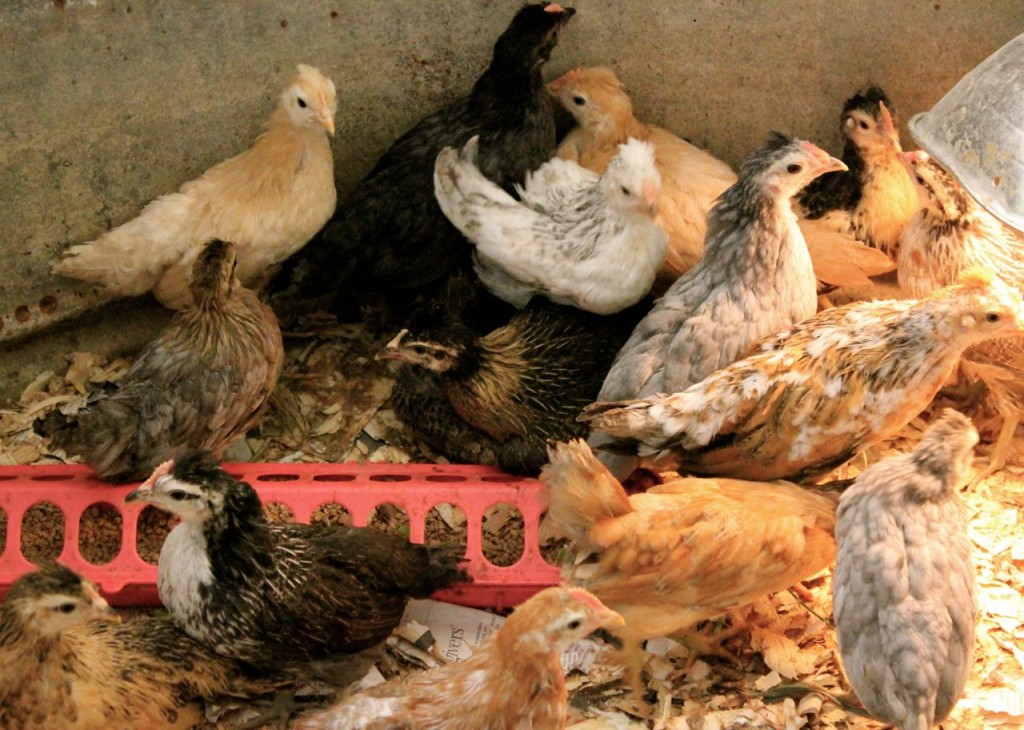
They have really come alive outside. These chickens were never made to live inside a garage, that’s for sure!
I wrote about how I became interested in Icelandic chickens in this first post, if you are curious about the backstory at all.
The Icelandic chicken is one of the oldest recognized breeds of poultry in the world. Genetically, Icelandics have been found to be very different from any other breed of domestic chicken. They are also referred to as Viking Chickens, and are a landrace.
Many readers have asked me what a landrace is. Here’s the description, from the Icelandic FAQ document on the Icelandic Facebook page:
A landrace is a domesticated, regional ecotype; a locally adapted, traditional variety of adomesticated species of animal or plant that has developed over time, through adaptation to itsnatural and cultural environment of agriculture and pastoralism, and due to isolation from otherpopulations of the species. Landraces are generally distinguished from cultivars, and from breedsin the standardized sense.
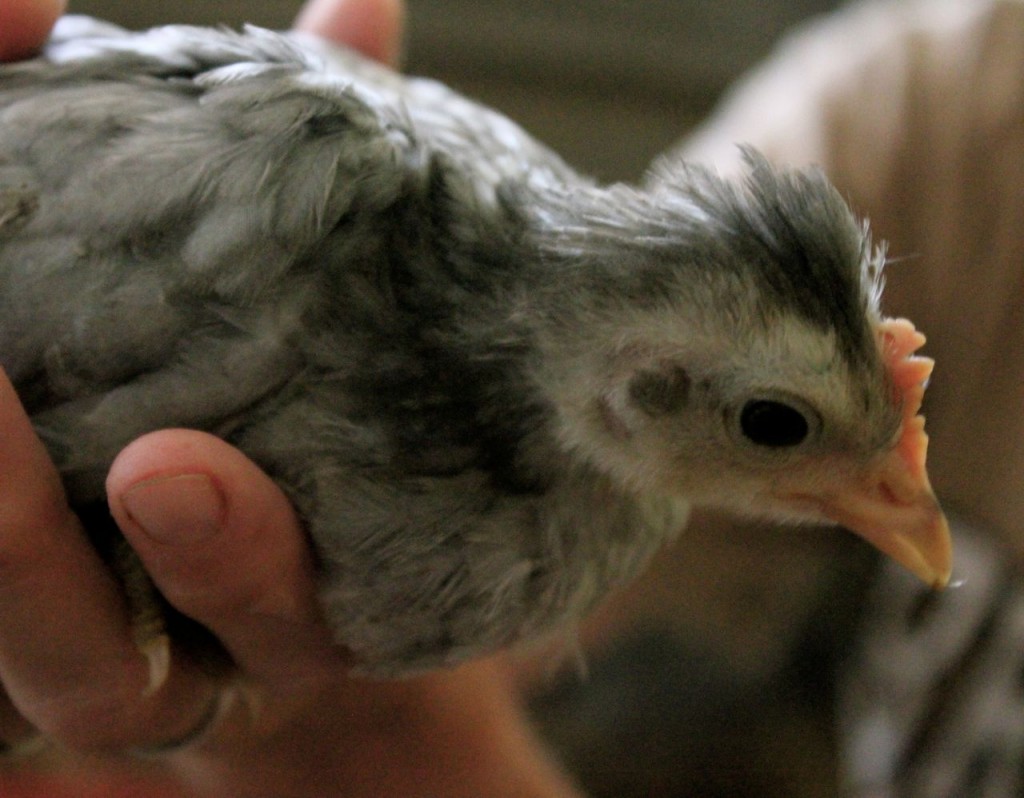
Keeping Icelandic chickens can be very addictive. I was thinking of this the other evening as little Mack and I coaxed our Icies out of a tree, one by one, and herded them gently into the coop: “This is addictive!” Well, perhaps not really then. 😉 But it’s true that each one is different in personality and looks. My little flock is like a gift box of chocolates: you’re not sure what is inside each one, but you know that every one is special (except for the orange cream-filled ones–).
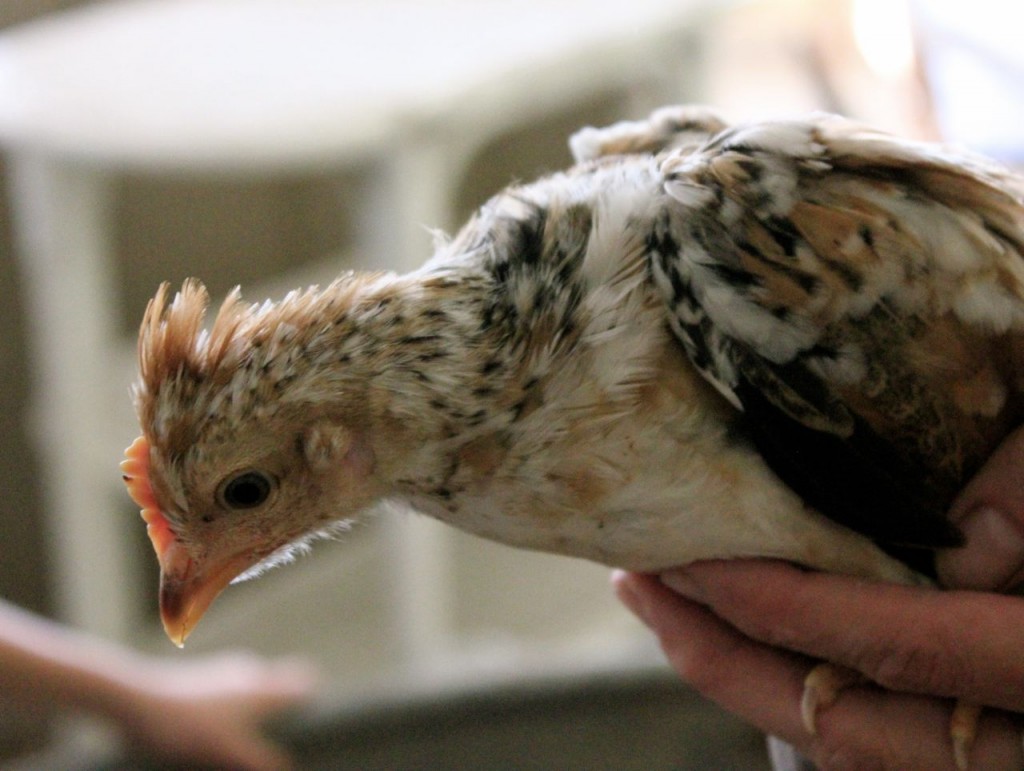
Malachi named this little speckled one “Butternut.”
I kept my baby Icies in the garage for the first few weeks, under a heat lamp, in a big cow tank (borrowed for an indefinite period of time from my parents) lined with newspapers and wood chips. The last chickens to occupy this rudimentary brooder were my meat chickens. Basically my Icies are totally opposite from the meat chickens, in nearly every way. They are on the small side, are lean and grow very slowly, and they were skitterish every time we entered the garage, and ate very little. They did show extreme interest in any bugs or flies that got into the tank, a precursor, of course, to their excellent foraging abilities.
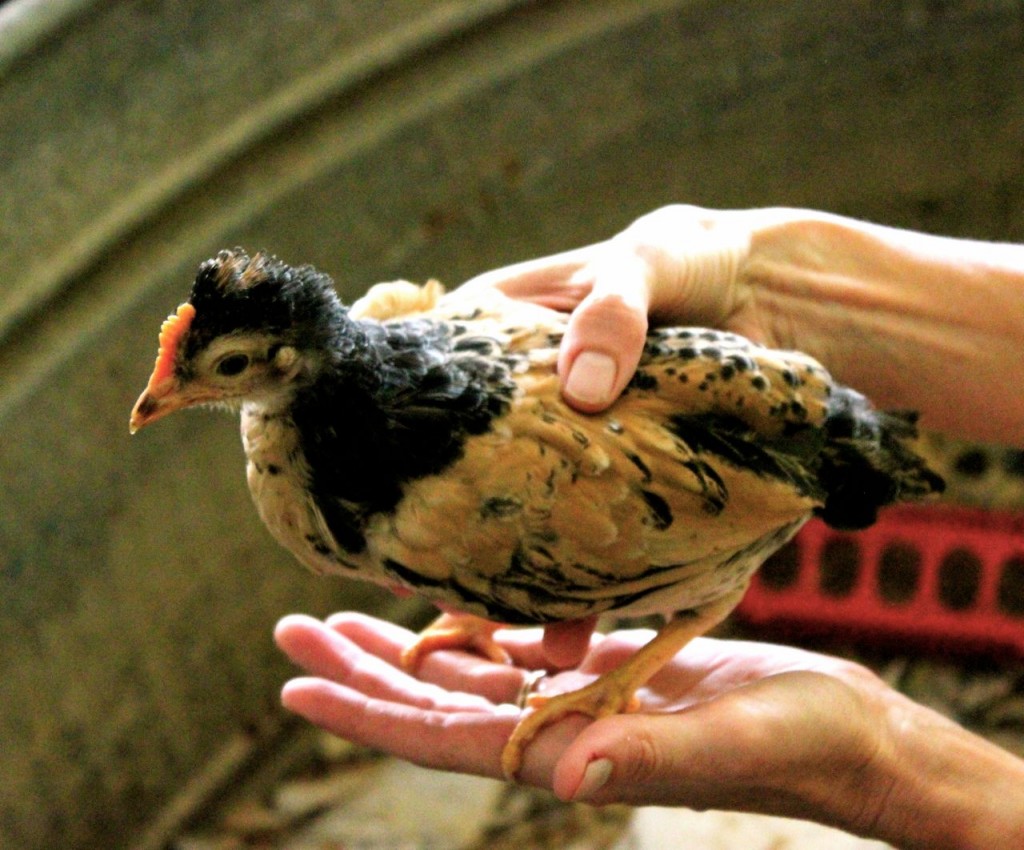
This one is named Gudmude, Norse for “God is protecting me.”
We have tried to handle them as much as we can, because there are so many advantages to having chickens that are at the tamer end of the spectrum, rather than the wilder end. Besides, they are so sweet and pretty and soft. Don’t you agree?
I was so attached to them by the time we moved them out to the tractor, that I couldn’t sleep nights at first, worrying that something would find them and tunnel in there, or something. But they were safe in the tractor. #myhusbandoverbuilds
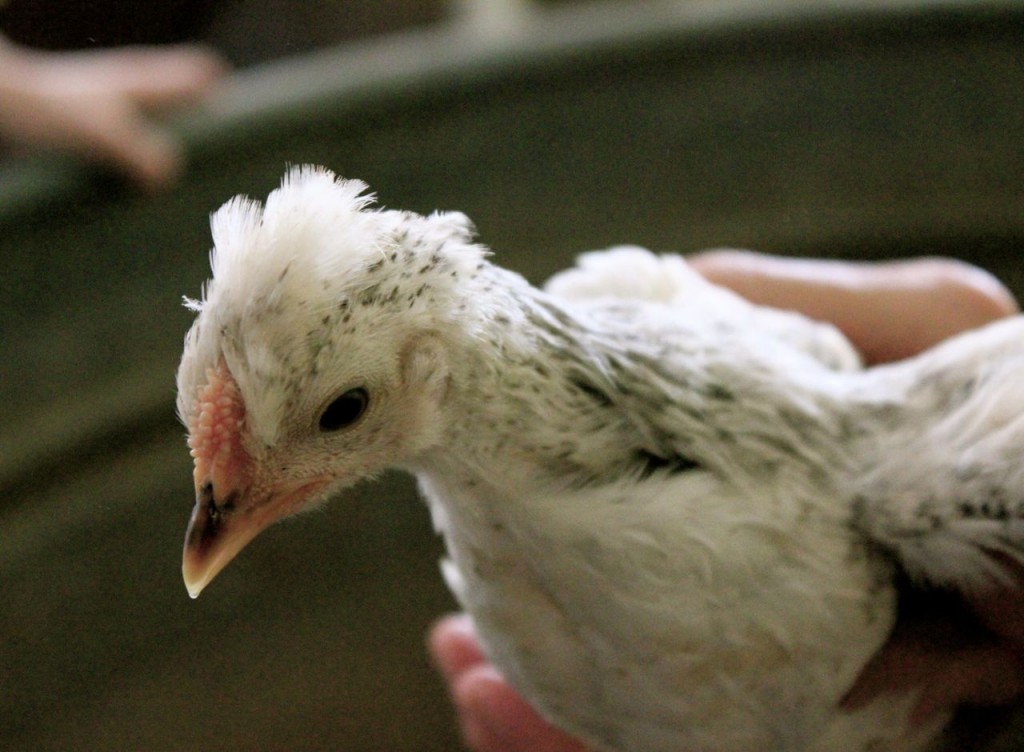
This one is “Saxby.” I love his hair-do. Isn’t his tiny little rose comb exquisite?
I have lots more to share with you about these unique chickens, but it’ll have to wait until next time. I am thrilled with them!
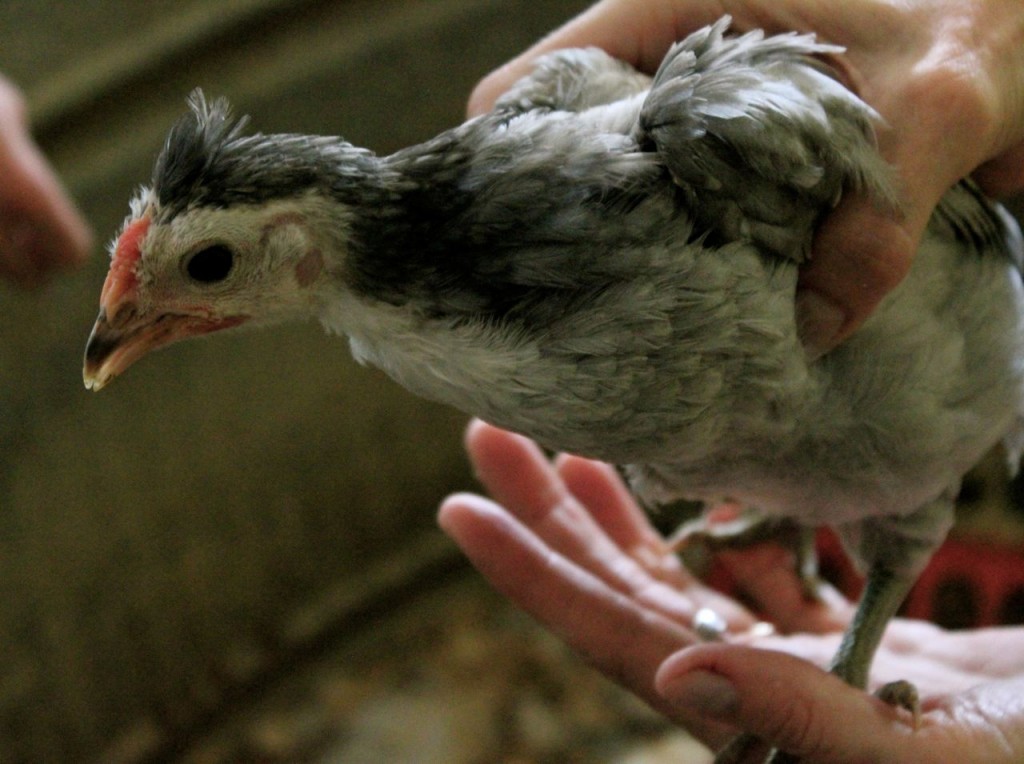
Another crested fellow: “Gandalf.”
Next time, my patient readers, I’ll write about the merry dance that my Icelandics have been forcing us to do every night, as we coax them out of the tree and into the coop at night, where they definitely do not want to be, and two simple tricks that we’ve employed to get them there. ALSO how they are already helping me with my gardening (hint: it has to do with their appetite for grasshoppers).
Until then—*smooch*—thanks for reading!
*hugs*
- Flash-Freezing Splendid Bell Pepper Bounty: simplest way of all!
- Make Roasted Cherry Tomato Pasta Sauce: It’s a Cinch!


Your chicken Gandalf should meet our cat Gandalf…well, maybe not! They’re both grey even.
Fellow readers – I had the privilege of meeting Amy’s flock of weird chickens a couple days ago, and can vouch for everything that Amy wrote above. They are very singular critters that behave nothing like the docile white hens one sees on TV or in the movies. These little guys/gals are definitely on the wild side. Reminds me much more of the quail and pheasants I once raised than any other chickens I’ve been around. (I once raised ordinary white meat chickens for a few years.) But they are gorgeous to look at. Every one a different color and feather pattern. Clearly they have different hair dressers too; no two heads look exactly alike. I think I will talk Amy out of one of her superfluous roosters and see if I can get a couple of females and raise them for entertainment. But first I’ve gotta build a super secure coop; the coyotes traverse my farm every day, as well as skunks, raccoons, possums and God only knows what else.
Thanks Gene for your endorsement! Yes, a sturdy coop is certainly very important, especially as we move into fall and winter, when food is not so easy for find for those wild critters.
I love this pictures, Mom! Beautiful photography. I had never even heard of these chickens before you got them. They seem to have quite the personalities. 🙂 Any chicken that is an avid eater of grasshoppers is a worthy investment, indeed.
Interesting that you are raising chickens more as pets than egg producers or possible a main dish at the next family outing. I am not sure if we could add pet chickens to our farm. My wife has decided that she wants to keep all 4 of the kittens, and has made the first trip to the vets to get them their shots. I have a special interest in the different roosters of the world and would like to see a picture of an Icelandic rooster crowing if you have one, which of course I am sure you do.
oh no, no, Chef, they aren’t just pets–Icelandics are excellent egg layers, and we’ll eat the superfluous roosters. And I plan to sell Icelandic chicks next year! I’ll definitely try to get a picture (and a video!) of one of my roos crowing, just for you!
Your chickens are so cute!!!!!!
we picked up 6 icelandic pullets thursday. one didn’t look well, and today she’s laying down with her head twisted to the side. we brought her inside (in a dog crate). i don’t think she’s going to make it. I’m concerned about the other birds and also about my existing ladies (several other breeds). they’ve been separated from my existing ladies , but only with wire fencing. thoughts?
I’m thinking, Susan, that you need to call the folks that you got the pullets from and explain all this to them. If they didn’t look good from the start, I’d certainly go to the source and ask some questions. Are you certain they are even purebred Icelandics? Did they come from a reputable breeder? That’s what I would be asking, first of all. Poor things! I do hope they pull through. I would isolate them from the other chooks, provide plenty of fresh water and food and watch them closely.
Did you ever post the two simple tricks to getting your chickens into the roost? I also got my first icies this summer, and have struggles with this, although it is beginning to go much smoother now.
Okay, Doug, here is what we’ve done to get our Icies to go into our coop: First of all, I installed a very high perch for them–it’s as high off the floor as I could get it (about 5′). In fact half of them still will fly up to the top of the inside door, which is even higher. They’d all be up there if they all fit! Second: I prop open the front door of our coop during late afternoon (it goes right to the area where that high roost is, and the other chickens use the back door, mostly). Then I scatter treats–i.e. “bait”–leading to the front door, and then on in the coop for them. This has been very successful! Then if I’m home, I try to make sure and go out and if there are any holdouts in their preferred tree, I coax them down while it’s still light, and herd them into the coop. Most nights this week they’ve all gone into the coop voluntarily = success! Good luck!